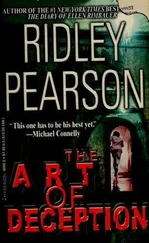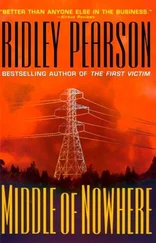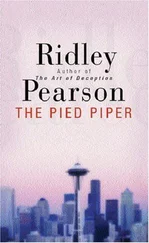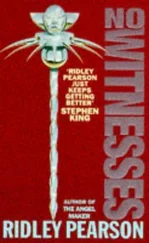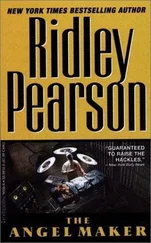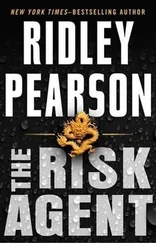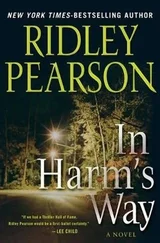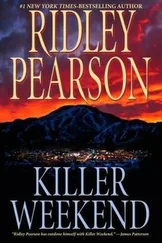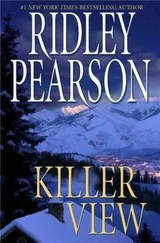As she bends down, something slips from her satchel. He leans back trying to steal a look at its contents, but it’s out of sight. Her hand pushes a tourist map across the table. There are seven smaller inked circles at the center of seven larger dashed circles, also in ink. It looks like a Venn diagram, the dashed circles overlapping.
“Health clinics,” she says.
“Berna.” Pangarkar’s encounter with the girl.
“Yes.” Her eyes chastise him for interrupting. “But here is the point. Seven areas of coverage.”
“Got that.”
Another dismissive look. “This is the clinic where I found Berna. When I was interviewing for my story.” She points to a small circle in the northwest of the city.
Knox understands she’s testing him. “You’re thinking that with so many clinics available, she’d go to the nearest one. That or one she was familiar with. One in her neighborhood, if she’s a local.” He pulled the map closer. “She lives somewhere within the dotted circle.”
Her eyes come alive, overcoming the fatigue and anxiety. “You’re good at this,” she says somewhat suspiciously. She’s in over her head.
Knox wants to help her, but reminds himself of his role. He can’t reveal the S on his undershirt just yet. He senses she’s glad to have someone to share this with; oddly enough, he appreciates being that person. Dulwich believes in straight lines—he does not condone working Pangarkar. He has Grace working the streets. Believes Knox should be taking this route as well.
“Someone within that circle knows her,” Sonia says.
“It shrinks the net. It’s good work.”
The compliment arouses more suspicion from her. Occupational hazard. Knox cautions himself.
“I suppose she could work outside the circle.” He sounds uncertain. “Or not. The clinic might be a place she knows from her family, or it could simply be a storefront window she saw.”
“It must be walkable, either from her home or the sweatshop.”
“Interesting.” He was there already.
“So, perhaps we widen the circle.” Sonia draws a slightly bigger ring around the outer boundary. The darker circle around the clinic becomes a bull’s-eye.
“You find a picture worth making and I can be there in ten to fifteen minutes.”
“Two of us—” She’s not going to beg.
“I’m interested in Berna’s story,” he says. “More generically than you, but interested. Finding the knot shop would make a nice image. A school, not so much, but it might lead to something more worthwhile.”
“The streets. The kinds of places people like Berna live.”
She’s crafty. He likes that. He’d sensed this cunning in her article as well. While exposing the larger problems of health care, she’d personalized the problem by bringing in Berna’s story. By the end of the piece, the reader was ready to shut down every sweatshop between Amsterdam and Beijing. Sonia Pangarkar brought passion to her work, but she allowed it to possess her—which could make for bad decisions.
“I could spend a day or two shooting the streets as background.”
“You could ask after her while you do that work. I’m known on the streets. My face. The television.”
“I suppose.” He nods. He’s not accustomed to making a game out of being sought after. He finds it interesting to be on the receiving end of such attention. Marvels at her ability to manipulate. Realizes the longer and deeper he allows his ruse to stray from the truth, the more damaging the eventual revelation will be. He’s locking himself into an identity he’s uncomfortable with.
“It would help us both,” she says. “I don’t want to end up next on the victim list.” But of course he does. If he becomes the target, the entire operation is expedited. The risk is also a rush.
“It might move the story forward, get us paid sooner.”
“I like being paid,” he says. “Until something better comes along, why not?”
Sonia uses the pen to cross-hatch half the wider of the two circles around the clinic. The dividing line falls on a street. “We will start from the clinic and work our way out.”
“We? You said you’re too well known.”
“Yes, well, how much time do you think Berna has? Her face is known as well. She’s a threat to them. Her story’s out there.” She hesitates. “My fault.”
“The school records,” he says. “Expediting that search—”
“I’m on it.”
—
THE SIGN ISwhere the vendor told her it would be. MALL. Grace expected a retail center, but the sign is above a darkened alleyway. She walks past on the opposite sidewalk and continues to the next street corner, where she pauses and leans against a wrought-iron railing. It’s five thirty-five but feels more like midnight.
The entrance to the building to the left of the dark alley is up four steps from the sidewalk. It’s an unattractive brick box, a single structure occupying the space of four canal houses. There are security bars across most of the lower-level windows, potted flowers on either side of the steps. She’s guessing five to ten apartments. Was this the address the vendor meant to give her, or did she mean the alley itself? Grace has no idea what to expect: Berna? her family? a school chum? a girl who looks like Berna? the thugs responsible? Had the vendor called ahead to make sure that a curious EU official is greeted appropriately? There can’t possibly be a shopping mall down the dark alley beneath the sign.
She double-checks her iPhone confirming the “Find My iPhone” feature is activated. She texts Knox.
if no text in 10 mins use Find My iPhone
Her finger hesitates above the blue iMessage bubble. She knows if he’s not back there watching her already, he’ll take the text as a call to action. She regrets it, but she can’t be responsible for Knox’s decisions.
She hits SEND.
—
A CHINESE GUYspeaking Dutch and wearing Tom Ford gets take-out.
Sonia’s voice is tight when she speaks. “I shouldn’t have published the piece.”
“It’s a sweatshop,” Knox says. The restaurant has become claustrophobic. “They need workers. They don’t get rid of what they need.”
“Berna was not going home at night. You don’t chain girls who go home.”
“So they’ll keep her alive.”
“I believe we’re talking about two different kinds of workers. Those who are recruited locally, and those who were not offered a choice. This second group of girls never leaves.”
“Locals and residents,” he says.
She grimaces. “There’s another more lucrative market for girls this age.”
Knox’s collar is suddenly too tight. He reaches there only to realize he’s wearing a T-shirt under the windbreaker. “We have a girl in a sweatshop. That’s all.” She forces images into his thoughts. Maybe he’s a photographer after all.
“We,” the writer says.
The buzzing of his phone rescues him. He reads the incoming text.
“I have to go,” he announces. “I’ll start tomorrow morning.”
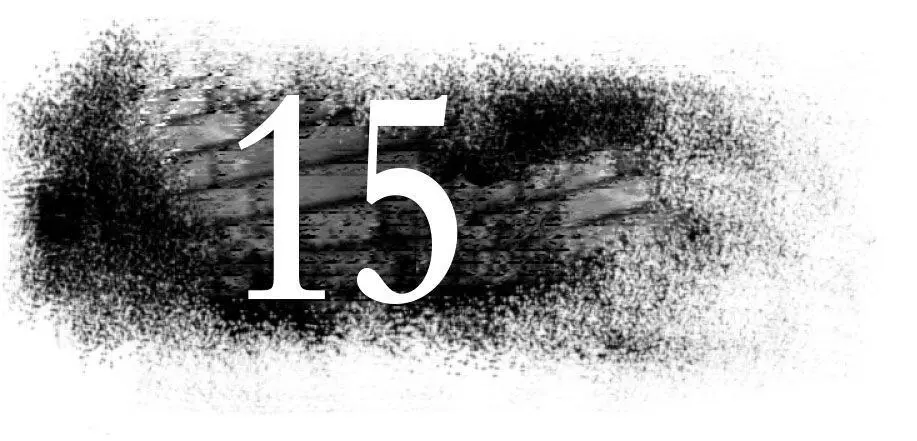
The enclosed alleyway reminds her of a subway tunnel. One with no lights. One that smells sour and sordid. Tobacco. Marijuana. Stale beer. Human piss. Dog excrement. The entire urban experience reduced to olfactory overload. She enters the dark with trepidation. The woman in the scarf haunts her. Be careful, haunts her. The path beneath her is covered in a viscous goo, a residual sediment not washed away by rain. Her soles smack with it. It seems to move beneath her. She’s through the space in less than thirty seconds, but in that short time her heart accelerates to an aerobic level and her mouth goes dry. She’d give anything for a Coke.
Читать дальше


